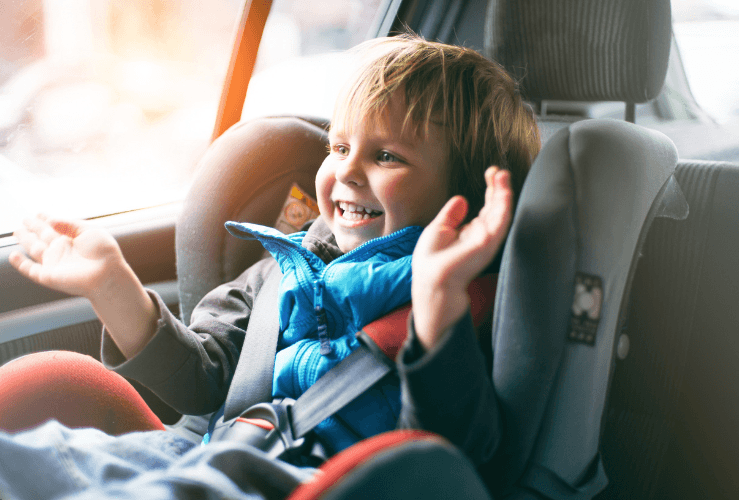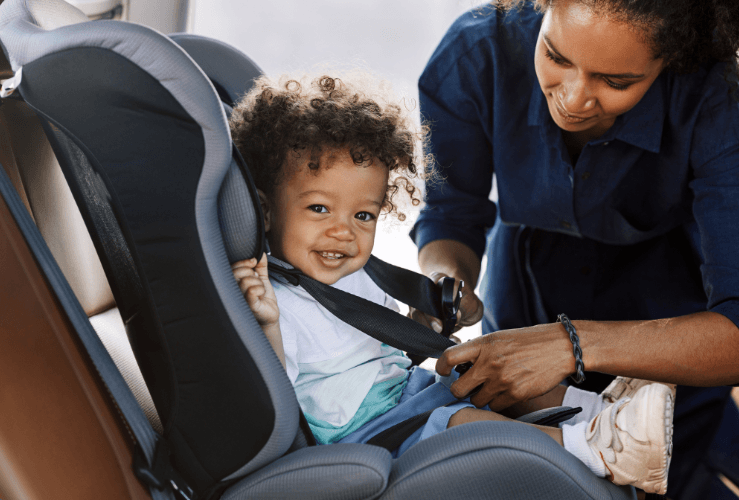A quick guide to UK child seat and seat belt laws
In the UK, children must normally use a car seat until they reach the age of 12 - or grow to a height of 135cm - whichever happens sooner.
If a child is over the age of 3, it is permissible for them to travel in the rear seat of a vehicle if it doesn’t have this equipment fitted.
Under 3s, in most cases, must be sitting in a child car seat.
This rule may not apply if the journey is an emergency; or if the child is in a taxi, minibus, coach or van.
If there is no space for another child car seat, such a journey is also permitted.

Children’s seat belt law for over-12s
All children over the age of 12 must wear a seat belt when travelling in a car.
In most cases, if a vehicle has a seat belt, it must be worn – no matter the age of the occupant.
You may face a fine if you break the rules outlined above.
What kind of car seats can be used in the UK?
Height-based child car seats: “i-Size”
'i-Size' seats is the name given to height-based child car seats.
Forward-facing child car seats can only be used by children once they are 15 months old; otherwise they must be rear facing.
The seat must be suitable for the height of the child.
Only EU-approved height-based child car seats can be used in the UK: these feature a circled capital 'E' and 'R129'.
i-Size seats are available in three different sizes:
- 0-85cm (similar to G0+ in weight-based system) – rear-facing baby carrier or baby seat with harness
- 0-105cm (similar to G0/1/2) – rear-facing baby seat until your child is at least 76cm, then forward facing
- 100-135cm (UK)/150cm (ROI) (similar to G2/3) – forward-facing child seat
Weight-based child car seats
Only EU-approved weight-based child car seats can be used in the UK: these feature a circled capital 'E' and 'ECE R44'.

The 5 child car seat groups
Note that booster cushions are now only approved as group 3. However, you can still use group 2 booster cushions if you already have them.
Here are the 5 child car seat groups:
Group | Seats |
|
0kg to 10kg | 0 | Known as lie-flat or ‘lateral’ baby carrier, rear-facing baby carrier, or rear-facing baby with a harness |
0kg to 13kg | 0+ | This is a rear-facing baby carrier or rear-facing baby seat using a harness |
9kg to 18kg | 1 | This type is a rear- or forward-facing baby seat with a harness or safety shield |
15kg to 25kg | 2 | This is a rear- or forward-facing child car seat (or a high-backed booster seat or booster cushion) with a seat belt, harness or safety shield |
22kg to 36kg | 3 | A rear- or forward-facing child car seat (or a high-backed booster seat or booster cushion) with a seat belt, harness or safety shield |
Some child car seats feature ISOFIX anchor points which can be used with lap seat belts.
Others are designed for use with lap seat belts.
However, all other child car seats can only be used if the vehicle has a diagonal strap as part of their seatbelt.
It is not permitted to fit a child car seat in a side-facing seat.
Find out how to install child car seats
Can I put the car seat in the front seat?
Yes, you are permitted to use a child car seat in the front seat, but it is safer for them to travel in the rear.
Deactivate front airbags when fitting a rear-facing seat in the front
You must deactivate the front airbags when seating a child in a rear-facing seat in the front of the car. This prevents injury in the event of a collision.
Forward-facing front seat: safety
If you must seat a child in a forward-facing seat, ensure the seat is as far back as possible, to prevent any impact from the front airbag.
Child seat belt locks
Child seat belt locks prevent children from unlocking their seat belt either intentionally or accidentally.
Modern child car seats feature these devices.




